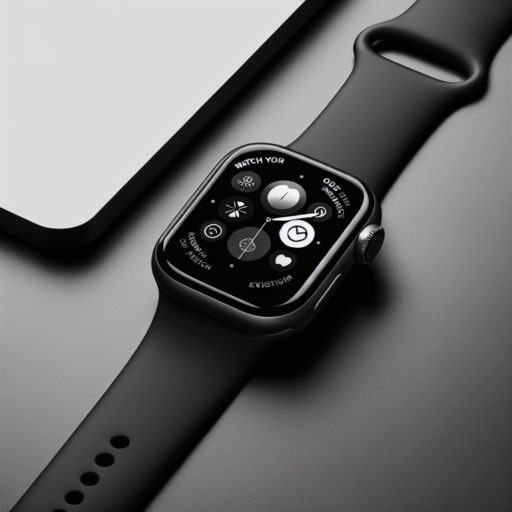No se han encontrado productos.
Why is my Apple Watch now black and white?
Discovering that your Apple Watch screen has switched from its vibrant colors to a stark black and white display can be perplexing. This sudden color shift is typically the result of the watch entering Greyscale mode, a feature designed to reduce screen distractions and extend battery life. Understanding the causes and how to address them can swiftly restore your device’s colorful display.
Accidental Activation of Greyscale Mode
One common reason for an Apple Watch switching to black and white is the accidental activation of Greyscale mode. This can happen more easily than one might expect, often through unintended swipes or taps in the Watch’s settings. Greyscale mode is found under the Accessibility settings, intended to help users who need high-contrast visuals for better visibility or those who wish to minimize screen stimuli.
Software Glitches and Updates
Occasionally, a software glitch following an update or due to an unstable build can cause your Apple Watch to display in black and white. In these instances, restarting your device or checking for pending updates in the Watch app on your iPhone can resolve the issue. Software updates often include bug fixes that restore normal functionality and color displays to your Apple Watch.
How do I turn off the black and white Apple Watch?
Turning off the black and white mode on your Apple Watch is a simple process that can vastly improve your overall experience by reintroducing the vibrant colors you’re missing. This grayscale mode, often enabled accidentally or for specific accessibility needs, can be disabled through a few steps in the watch’s settings. Understanding how to manage these settings can enhance your interaction with your device, making it more personalized and enjoyable.
Step-by-Step Guide to Disabling Grayscale
Navigating the menu to turn off the black and white setting on your Apple Watch might seem daunting at first, but with the following instructions, you’ll have your device back in full color in no time. Start by pressing the Digital Crown to access your apps. Then, locate and tap on the Settings gear icon. Scroll until you find Accessibility, and tap it. Look for the Display & Text Size option, and once inside, you can switch off the Grayscale toggle. Your watch face should immediately return to its colorful display.
Troubleshooting Common Issues
If you’ve followed the steps above but your Apple Watch is still displaying in black and white, ensure that you’ve not enabled any other accessibility features that might affect color settings, such as the Increase Contrast or Reduce Transparency options. Restarting your Apple Watch is also a go-to solution for resolving many display-related issues. To do this, press and hold the side button until the sliders appear, then drag the Power Off slider. After your watch has turned off, press and hold the side button again until you see the Apple logo.
Why is my Apple Watch in grayscale?
If you’ve noticed your Apple Watch display has suddenly lost its colors and everything looks like an old-time movie, there’s a good chance your watch is in grayscale. This unexpected switch can be disorienting, but it’s usually the result of specific settings adjustments rather than a hardware issue. Understanding why your Apple Watch has switched to grayscale can help you quickly restore its colorful display.
Accidental Activation of Grayscale Mode
One of the most common reasons for an Apple Watch displaying in grayscale is the accidental activation of the grayscale mode. This feature is intended for users who require or prefer a monochrome display for easier viewing. Usually, this setting is found under the «Accessibility» menu on your watch. It’s easy to accidentally enable this mode, especially if you’re exploring settings or if your watch has been handled by someone else.
Software Glitches
Besides intentional changes to settings, software glitches can also cause your Apple Watch to display in grayscale. Operating system updates, particularly if interrupted or not properly installed, can lead to unexpected behavior like this. A simple restart of your Apple Watch often resolves these glitches. If not, checking for further updates or resetting the settings may be required to solve the issue.
How do you fix a black and white screen?
Fixing a black and white screen can often feel like a daunting task, but with a few troubleshooting steps, you can usually solve the issue without needing professional help. The reasons your screen may have lost color can range from incorrect graphics settings to hardware issues, but most commonly, the solution is simpler than expected.
Check Your Display Settings
First, examine your display settings to ensure that the color adjustments have not been altered accidentally. On Windows, navigate to Settings > System > Display, and make sure the color profile is set correctly. For Mac users, go to System Preferences > Displays > Color to verify or adjust your color settings. It’s surprising how often the issue is due to a simple tweak that was made inadvertently.
Update or Reinstall Graphic Drivers
Another common culprit for a black and white screen is outdated or corrupted graphic drivers. Access your Device Manager by right-clicking on the Start button and selecting Device Manager. Find your display adapter, right-click on it, and choose Update driver or Uninstall device. If you choose to uninstall, restart your computer, and your system will automatically attempt to reinstall the driver.
Inspect Hardware Connections
Finally, it’s essential to check all hardware connections. Loose or damaged cables can disrupt the color transmission from your computer to your monitor. Ensure all cables connected to your monitor and computer are secure and undamaged. If possible, try using a different cable or connect to a different display to rule out cable or monitor issues.
By systematically following these steps, you can address the most common issues that lead to a black and white screen. Remember, the solution often lies in the simplest adjustments.




